The post Cat Yeast Infection vs. Ear Mites: Vet Reviewed Differences (With Pictures) by Genevieve Dugal appeared first on Catster. Copying over entire articles infringes on copyright laws. You may not be aware of it, but all of these articles were assigned, contracted and paid for, so they aren't considered public domain. However, we appreciate that you like the article and would love it if you continued sharing just the first paragraph of an article, then linking out to the rest of the piece on Catster.com.
Click to Skip Ahead
If your cat is constantly shaking their head and scratching their ears, a few scenarios may come to mind: Are they allergic to something? Are they sick? Have they been infested by parasites? Constant irritation is also a fairly common sign of a few types of ear infections, so it can be challenging to know what’s going on exactly with your cat. However, other signs may give you a clue, such as a foul odor coming from the ears and the presence of a black or yellow discharge.
In this article, we explore two conditions— yeast ear infections and ear mites—to help you understand what may be affecting your beloved cat. Note that although the information presented here comes from reliable sources, it should not replace a proper diagnosis made by your veterinarian.
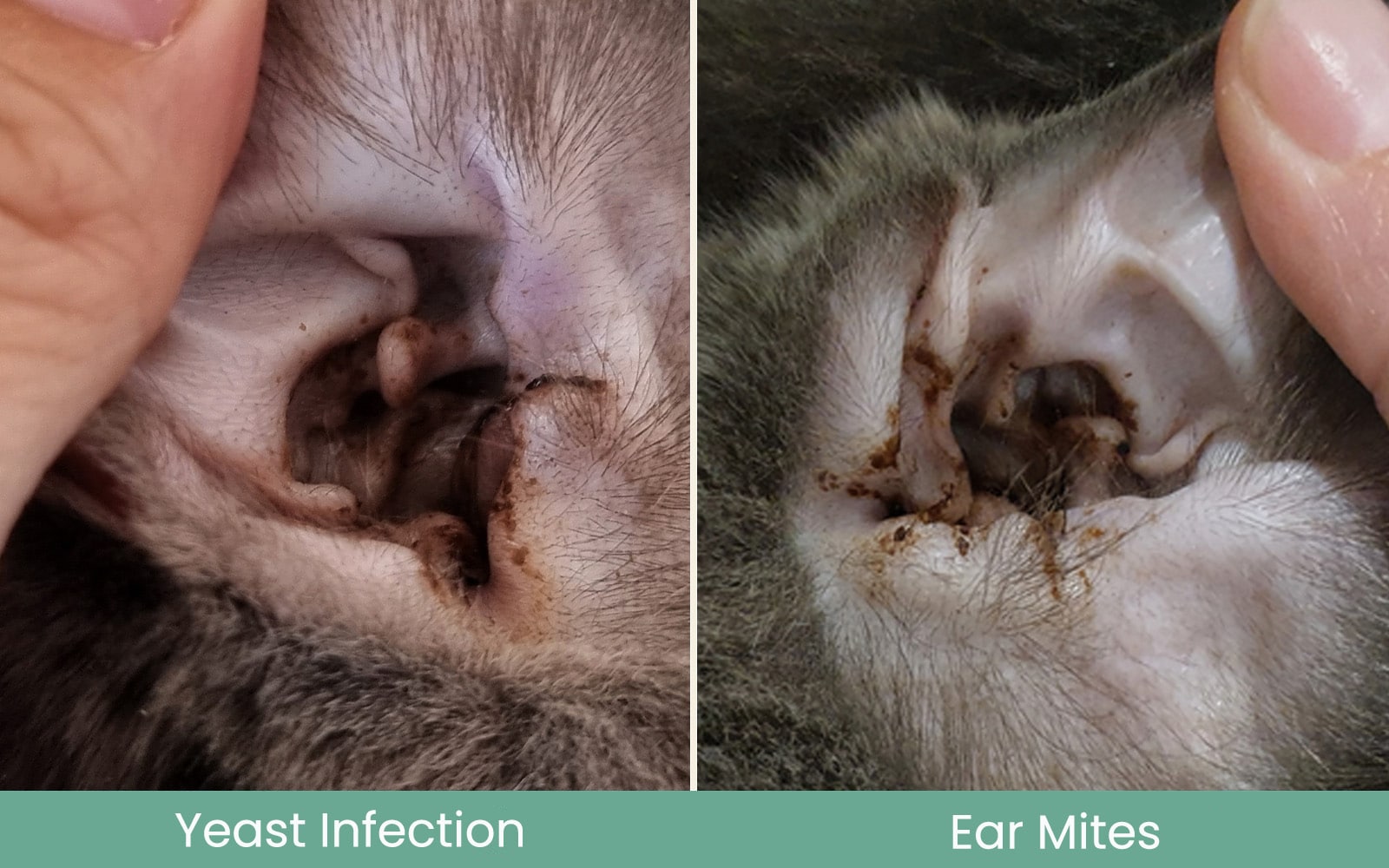
At a Glance
- Often symptomatic of an underlying disease
- Not generally contagious to other cats
- Common signs include head shaking and scratching of the ears and increased odor
- All cats can be equally affected
- Can lead to the development of a yeast infection
- Highly contagious to other cats
- Common signs include dark brown/ black discharge, head shaking, and scratching of the ears
- More frequent in kittens and outdoor cats
 Overview of Cat Yeast Infection
Overview of Cat Yeast Infection
Yeast is a type of microorganism (more specifically, a fungus) normally found on the skin in certain numbers and in the body of many species of animals, including humans.
The most common cause of feline yeast ear infections is Malassezia pachydermatis. This yeast is present in low numbers in the external ear canal as part of a cat’s normal skin flora. However, it can reproduce and grow out of control due to underlying issues that weaken the skin’s normal defenses, and cause an infection.
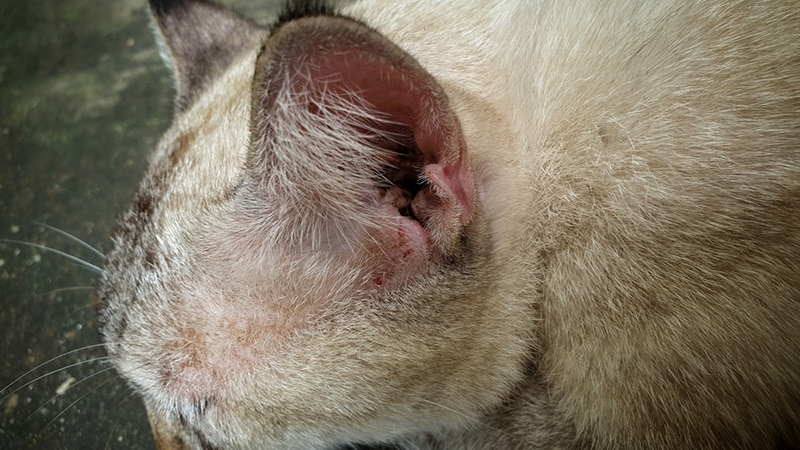
What Are the Signs of a Yeast Ear Infection in Cats?
The signs of any ear infection whether with yeast or bacteria can be similar, here are some common signs a cat might show:
- Head shaking
- Scratching the ears
- Brown or yellow discharge
- Increased odor from the ear
- Redness and inflammation
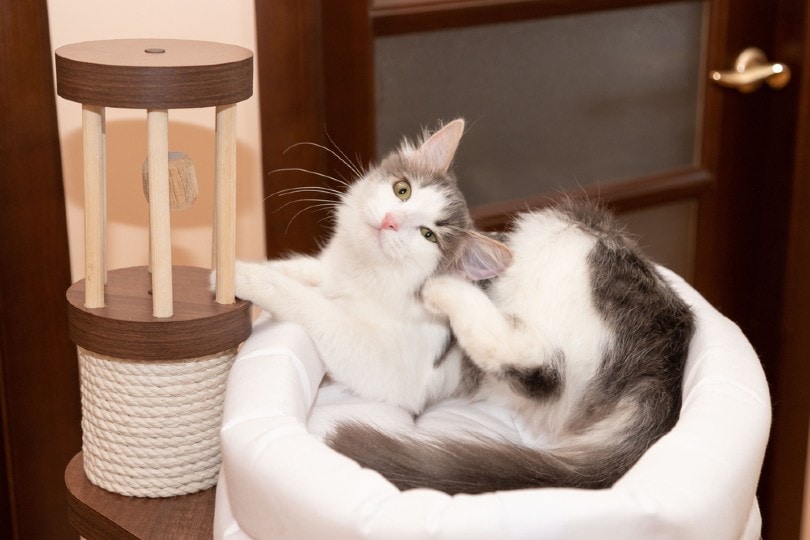
What Causes Yeast Ear Infections in Cats?
Yeast ear infections are usually opportunistic, meaning that they take advantage of a weak and damaged ear canal and overgrow. The inflammation and damage to the ear canal that ear mites create are a common cause of a yeast ear infection. Other causes include:
- Allergies
- Polyps
- Immune mediated conditions
- Foreign bodies ( e.g. grass seeds or hair)
- Incorrect or excessive ear cleaning
Can a Cat’s Yeast Infection Spread to Humans?
Feline yeast ear infections are generally not contagious to other pets or humans. Of course always practice normal hygiene measures, especially after cleaning or treating your pet’s ear infection.
Many other types of fungal infection can be spread to humans. Ringworm (dermatophytosis), which is the most common type of fungal skin infection in cats, is zoonotic meaning it can also infect humans.
Cutaneous Sporotrichosis is also zoonotic, this skin infection caused by a fungus called Sporothrix often causes lumps under a cat’s skin. Candida infections are rare in cats, but one study published in the Journal of Clinical Microbiology suggested that many animal species (such as cats, dogs, cattle, horses, and pigs) are susceptible to Candida infections and could be “vectors of transmission or reservoirs of strains causing human disease and may present a risk for immunocompromised patients1.”

How Is a Yeast Ear Infection Diagnosed and Treated?
Your vet will start by examining your cat’s ears with an otoscope. They will assess for any abnormal growths and examine the eardrum if possible. In severe ear infections the eardrum can be damaged and rupture. As the signs of a yeast ear infection can be very similar to a bacterial infection and other ear problems, they may take a small sample of the discharge to examine under the microscope to confirm an excessive number of yeasts.
Your vet will also perform a general clinical examination and may need to run other tests depending on what they find, and to try and work out the underlying cause of the yeast infection. With yeast infections of the external ear canal, often a medicated ear drop is prescribed which contains an antifungal ingredient as well as an anti inflammatory. If an underlying cause has been found for the infection then that will need to be addressed as well.
Ear cleaning is often necessary, follow your vet’s instructions on the correct ear cleaner, technique and frequency.
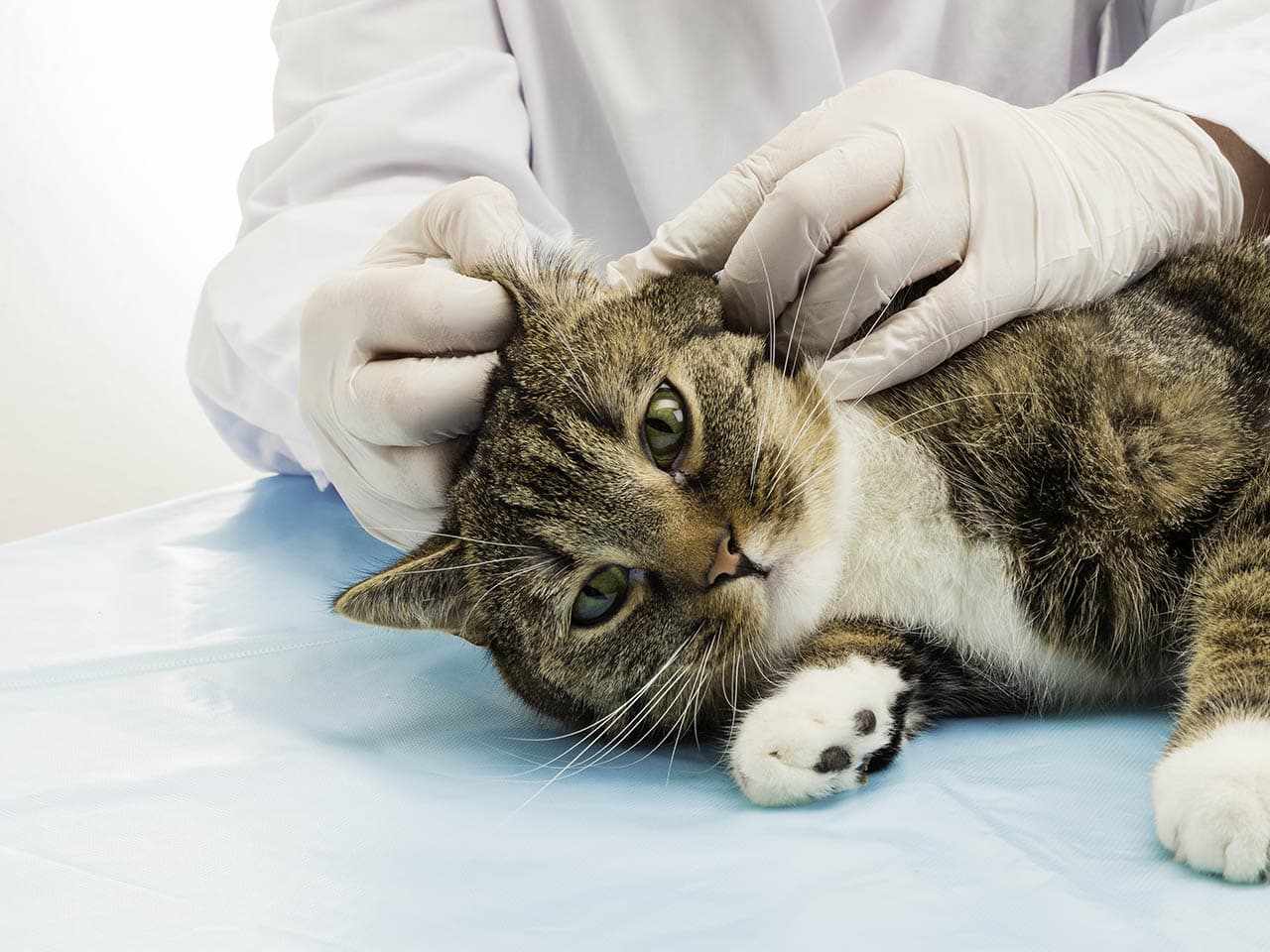
 Overview of Ear Mites
Overview of Ear Mites
Ear mites in cats are a type of parasitic infestation. The most common parasite that affects a cats’ ears is Otodectes cynotis. This tiny mite is extremely contagious and can even spread to other areas of the cat’s body. The moist environment of the ear canals is an ideal place for ear mites to feed, which they do with ear tissue debris, fluids, and wax. This feeding process causes intense itching.
In severe untreated cases, cats may scratch their ears so much that it causes pain, inflammation, trauma, skin lesions, and even a hematoma. Ear mites can lead to secondary infections with bacteria and yeasts and more serious problems, which is why it’s important to learn how to recognize the signs of infestation early.
Ear mites are more common in kittens and outdoor cats. However, no cat is truly safe from these tiny parasites, regardless of their age, breed, or lifestyle.
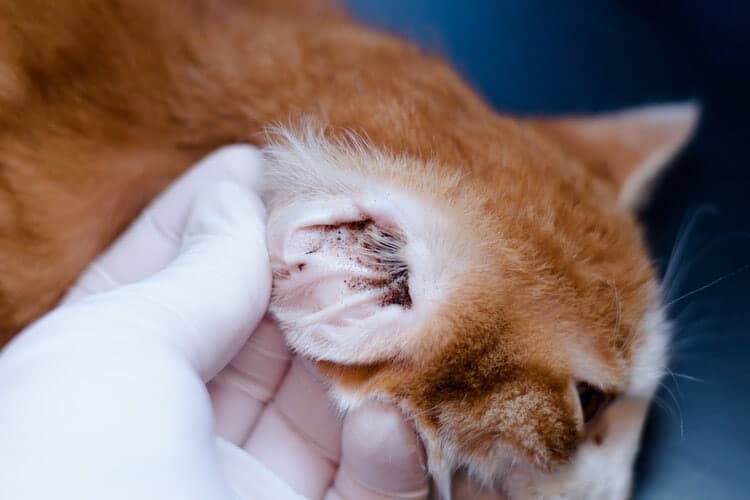
What Are the Signs of Ear Mites in Cats?
Signs of an ear mite infestation are similar to those of a yeast infection:
- Head shaking
- Scratching the ears
- Hair loss of the ear flaps or around them
- Dark crusty or waxy discharge
- Redness
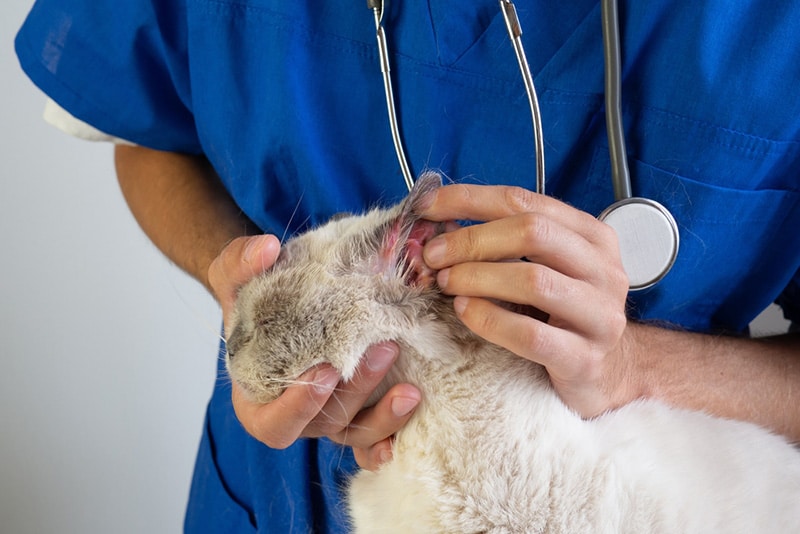
If the ear mites affect other parts of the body you can see itching, scratching and skin lesions elsewhere.
What Causes Ear Mites in Cats?
Ear mites are highly contagious and are easily spread through direct contact with infected cats or kittens. Some cats have ear mites but don’t show any signs and so can be a source of future infestations. Ear mites have limited ability to live off cats and in the environment.
Can Cat Ear Mites Spread to Humans?
Ear mites are not a major risk to humans, there have been a few reports of human infestations causing dermatitis following close contact with an infested animal, but this is rare. Primarily ear mites are extremely contagious but only among cats (and some other pets like dogs and ferrets).
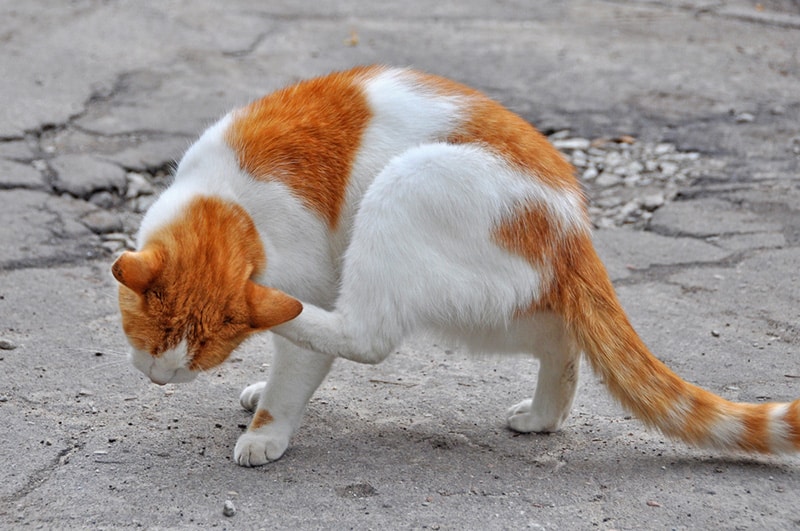
How Are Ear Mites Diagnosed and Treated?
It is essential to take your cat to the veterinarian for a proper diagnosis, as the signs are quite similar to other ear infections. Treatment for cat ear mite infestation usually involves cleaning the ears and removing debris and earwax buildup. Your veterinarian will usually prescribe certain ear drops to kill mites. Additionally, a flea medication that also works against mites may be prescribed. All cats, dogs and ferrets in the household will need to be treated.
What Are the Main Differences Between Yeast Infections and Ear Mites in Cats?
It can be difficult to distinguish ear mites from ear infections in cats based on the signs your cat is showing, but one of the major differences is the color and appearance of the ear discharge. If your feline has mites, the discharge is often dark brown to almost black, as it contains dried blood, debris, wax, and even the mites themselves. It is sometimes described as looking like coffee grounds. However, if your cat has a yeast infection, the discharge will usually be a lighter brown or yellowish and may have an unpleasant odor caused by overgrowing yeast.
That said, given the similarity of the signs of both conditions, and the fact that ear mites often lead to yeast infections (so both may be present concurrently), you will need to take your cat to the veterinarian for a proper diagnosis and effective treatment.
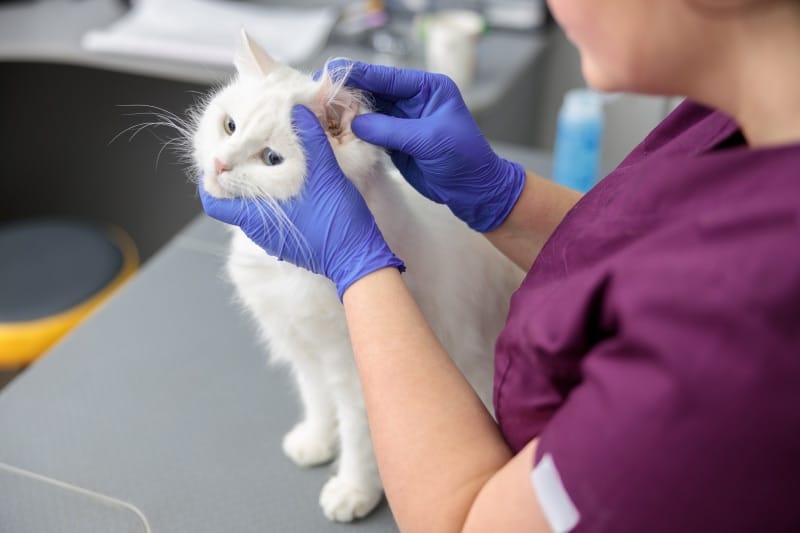

Conclusion
Ear mites are a real nuisance for our feline companions because they not only cause painful itching, but they can also lead to other issues including yeast infections if left untreated. Yeast infections are usually secondary to another underlying problem, so always call your veterinarian as soon as you notice the first signs of an ear problem.
The sooner the problem is treated, the sooner your beloved cat will be able to resume their regular activities without being bothered by the excessive itching of their poor ears!
Featured Image Credit: Left (Yeast Infection) RJ22, Shutterstock, Right: (Ear mites) RJ22, Shutterstock
The post Cat Yeast Infection vs. Ear Mites: Vet Reviewed Differences (With Pictures) by Genevieve Dugal appeared first on Catster. Copying over entire articles infringes on copyright laws. You may not be aware of it, but all of these articles were assigned, contracted and paid for, so they aren't considered public domain. However, we appreciate that you like the article and would love it if you continued sharing just the first paragraph of an article, then linking out to the rest of the piece on Catster.com.
from Catster https://ift.tt/slCFvjw
